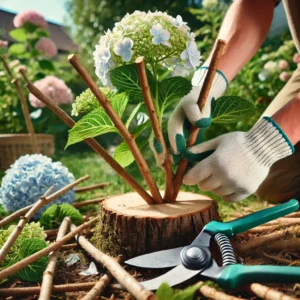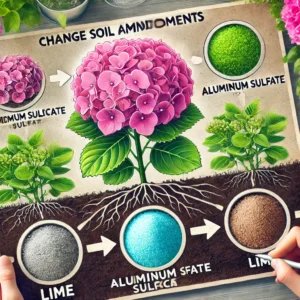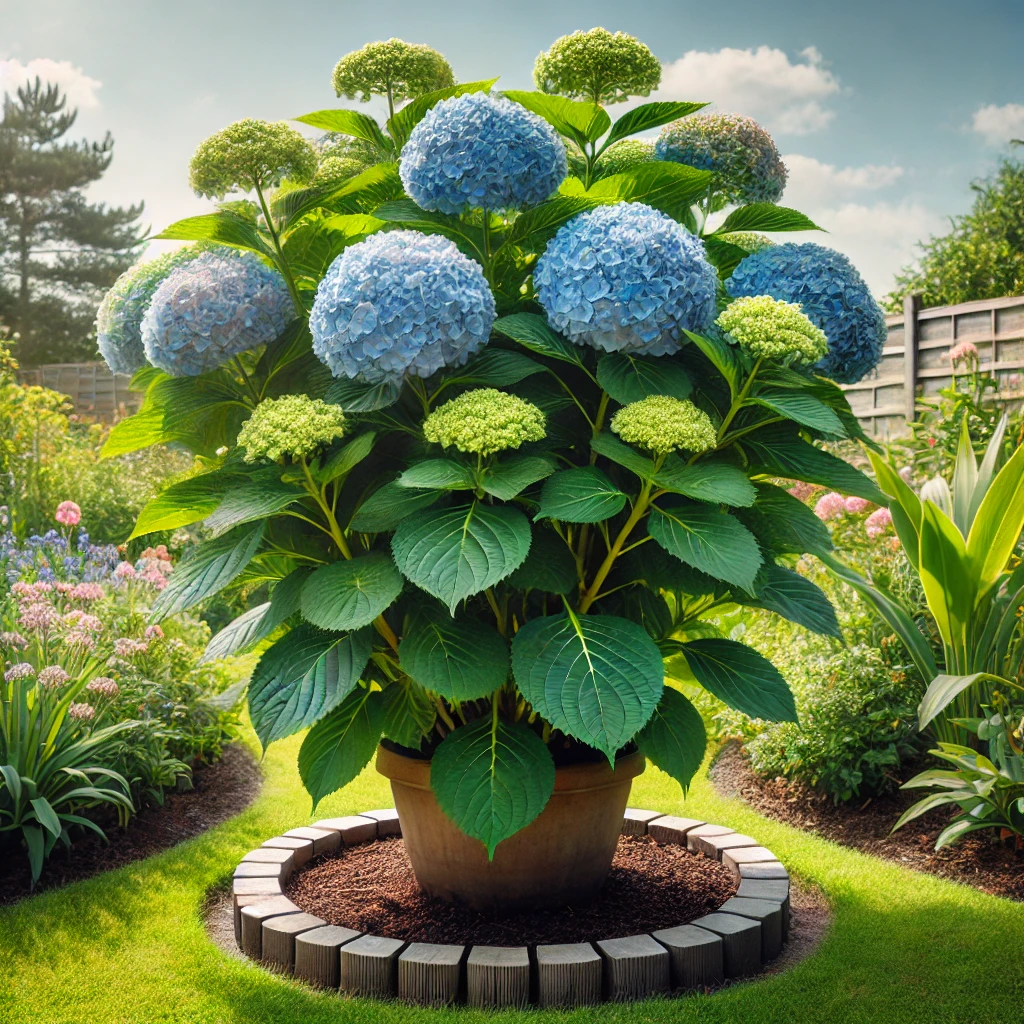About Maintaining Hydrangea
Are you looking tips for how to maintain hydrangea? Hydrangea plants are beloved for their large, colorful blooms and their ability to thrive in various garden settings. Proper maintenance of hydrangeas is essential to ensure they stay healthy and produce abundant flowers. This comprehensive guide covers everything you need to know about caring for hydrangea plants, from optimal growing conditions to pest control and seasonal care.
Optimal Conditions for Growing Hydrangeas
Hydrangeas flourish in well-drained soil that is rich in organic matter. The ideal soil pH for most hydrangea varieties is between 5.5 and 6.5, although adjusting the pH can change the bloom color of certain types. Hydrangeas need a balance of sunlight and shade, ideally receiving morning sun and afternoon shade. The optimal temperature range for hydrangeas in the USA is between 60°F and 70°F, making them suitable for USDA hardiness zones 3-9.

Planting and Watering Hydrangeas
When planting hydrangeas, choose a location with good drainage and enrich the soil with compost. Space the plants about 3-10 feet apart, depending on the variety, to allow for proper air circulation. Hydrangeas require regular watering, especially during dry periods. Water deeply once or twice a week, ensuring the soil stays consistently moist but not waterlogged. In hotter climates, additional watering may be necessary to keep the plants hydrated.
Pruning and Fertilizing Hydrangeas
Pruning hydrangeas helps maintain their shape and promotes new growth. The best time to prune depends on the variety. For example, mophead and lacecap hydrangeas should be pruned after they bloom, while panicle and smooth hydrangeas can be pruned in late winter or early spring. Fertilizing hydrangeas should be done sparingly; use a balanced, slow-release fertilizer in the spring. Organic fertilizers, such as compost or well-rotted manure, can also be beneficial for promoting healthy growth.

Dealing with Pests and Diseases
While hydrangeas are relatively pest-resistant, they can occasionally be affected by insects such as aphids, spider mites, and scale. These pests can be controlled with insecticidal soap or neem oil. Hydrangeas are also susceptible to fungal diseases like powdery mildew and leaf spot, often caused by excessive moisture and poor air circulation. To prevent these issues, ensure proper spacing, avoid overhead watering, and remove any affected foliage promptly.
Seasonal Care for Hydrangea Plants
Hydrangea care varies with the seasons. In spring and summer, focus on regular watering and deadheading spent blooms to encourage new flowers. During fall, reduce watering and apply mulch to protect the roots during winter. In colder regions, cover hydrangeas with burlap or a frost cloth to protect them from harsh winter conditions.
Enhancing Hydrangea Bloom Color
The color of hydrangea blooms can be influenced by soil pH. For blue flowers, maintain a soil pH of 5.5 or lower by adding aluminum sulfate. For pink flowers, aim for a soil pH of 6.5 or higher by incorporating lime. Achieving vibrant blooms also depends on proper fertilization and adequate sunlight. Avoid over-fertilizing, as it can lead to lush foliage but fewer flowers.

Hydrangea Plant Care Summary
| Care Aspect | Details |
|---|---|
| Soil | Well-drained, rich in organic matter, pH 5.5-6.5 |
| Sunlight | Morning sun and afternoon shade |
| Watering | Deeply once or twice a week, keep soil consistently moist |
| Pruning | Prune after blooming for mophead/lacecap, late winter/early spring for panicle/smooth |
| Fertilizing | Balanced, slow-release fertilizer in spring, organic options like compost |
| Pests | Aphids, spider mites, scale – use insecticidal soap or neem oil |
| Diseases | Powdery mildew, leaf spot – ensure proper spacing and avoid overhead watering |
| Seasonal Care | Adjust watering, mulch in fall, cover in winter in colder regions |
| Bloom Color Enhancement | Adjust soil pH for desired bloom color, proper fertilization, adequate sunlight |
